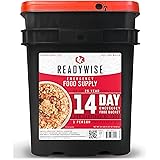Table of Contents
- 1. Assess Your Familyâs Risks
- 2. Create a Family Emergency Communication Plan
- 3. Assemble Emergency Supply Kits
- 4. Designate Emergency Family Meeting Spots
- 5. Conduct Regular Emergency Drills
- 6. Establish Evacuation Routes
- 7. Assign Roles and Responsibilities
- 8. Keep Important Documents Safe and Accessible
- 9. Educate and Involve Children
- 10. Review and Update Your Plan Annually
1. Assess Your Familyâs Risks
Understanding Local Threats
Every familyâs emergency plan for families should start with understanding the specific risks in your area. Are you in a flood zone? Near fault lines? Has there been recent wildfire activity? Recognizing these dangers helps tailor your plan to be effective. For example, families living in earthquake-prone regions need different preparations than those in hurricane zones.
Research local hazard maps and reports from city or county emergency management agencies. Many communities provide resources that outline common threats and recommended planning strategies. Use federal data sources like FEMA to stay updated on regional risks, especially as climate change impacts become more pronounced in 2025.
By identifying the most relevant risks, your family can focus on the most critical aspects of your emergency plan for families, ensuring you are better prepared to handle specific scenarios.
Assessing Family-Specific Vulnerabilities
Beyond geographical risks, consider your familyâs unique needs. Are there elderly or disabled members? Do you have pets? Are young children involved who require special care? These factors influence the planning process. For example, families with infants should stock up on necessary supplies and have a plan to secure childcare if needed.
Conduct a family vulnerability assessment, listing possible scenarios that could impact your household. This personal evaluation ensures that your emergency plan for families is comprehensive and inclusive of everyoneâs needs, creating a more resilient response when disaster strikes.
Regularly review and update this assessment as your family changes or as hazards evolve over time, especially in 2025 with emerging threats like cyber disruptions and new natural disasters.
== > What if ... Get a FREE Subscription to PREPARE
2. Create a Family Emergency Communication Plan
Establishing Clear Communication Channels
One of the most vital components of an emergency plan for families is establishing reliable communication methods. In times of crisis, cell networks can become overloaded or fail, so having multiple ways to connect is essential. Designate an out-of-town contact who can relay messages between family members if local lines are down.
Make sure everyone knows how to reach this contact and has the contact’s information saved in multiple places, such as phones and written on paper. Also, consider alternative communication methods like walkie-talkies or satellite phones for added security.
Creating a communication map helps everyone understand how to get in touch, where to meet, and what steps to take if separated. Practice these plans periodically so everyone feels prepared in 2025 and beyond.
Sharing Emergency Plans with Children
Children often feel anxious during emergencies, especially if they donât understand whatâs happening. Explaining your emergency plan for families in an age-appropriate way reassures them and encourages cooperation. Use simple language and role-playing to teach children what to do if they get separated or if youâre not home.
Involving kids in creating part of the plan can empower them and foster a sense of safety. For example, teach them how to use a designated family code word, how to contact emergency services, and where the family meeting spots are located.
In 2025, leveraging technologyâsuch as family apps designed for emergency alertsâcan enhance communication and keep children informed in real-time.
Get Preparedness and Self-Reliance Tips. Subscribe Now!Â
3. Assemble Emergency Supply Kits
Essential Items for Your Kit
Every effective emergency plan for families includes well-stocked supply kits. A basic kit should contain water (at least 1 gallon per person per day for three days), non-perishable food, first aid supplies, medications, flashlight, batteries, and hygiene items. In 2025, consider adding solar-powered chargers and multi-use tools to adapt to new technology and resource availability.
Donât forget important items like copies of family documents, cash, and emergency contacts. Customize kits for each family memberâinfants, elderly, petsâso everyoneâs needs are met. Having these supplies ready can significantly reduce panic during a crisis.
Rotate and check your supplies regularly to ensure everything remains functional and within expiration dates. Involving the entire family in this process encourages preparedness and accountability.
Creating Multiple Kits for Different Locations
To maximize safety, prepare supply kits for various locationsâhome, car, and workplace. Each kit should be tailored to its environment and easily accessible. For example, keep your car kit in an accessible trunk or back seat, stocked with essentials such as blankets, snacks, and a roadside emergency kit.
In 2025, technology allows for digital versions of important documents stored securely via cloud services, making recovery easier if physical items are lost. Training family members on where these kits are stored and how to access them ensures everyone is prepared to respond effectively during an emergency.
Implement a routine to update kits, check expiration dates, and replace worn items, maintaining a high level of readiness in your emergency plan for families.
Conclusion
In conclusion, establishing a comprehensive and effective emergency plan for families is crucial for safeguarding your loved ones in 2025. By assessing risks, creating communication strategies, assembling supply kits, and regularly reviewing your plans, your family can respond confidently when disaster strikes. Remember, an emergency plan is not a one-time activityâit’s an ongoing process that evolves with your family and the world around you. Staying prepared today ensures your familyâs safety tomorrow, making readiness a priority in 2025 and beyond.
Frequently Asked Questions
1. Why is creating an emergency plan for families important in 2025?
Creating an emergency plan for families in 2025 is vital because hazards are evolving, and preparedness can significantly reduce the impact of disasters. With climate change and new threats, being proactive helps ensure safety and peace of mind.
2. What are the key components of a family emergency supply kit?
Key components include water, non-perishable food, first aid supplies, medications, flashlight, batteries, hygiene items, important documents, cash, and items tailored to family members’ specific needs like pet supplies or infant formula.
3. How often should I review and update my emergency plan for families?
Every year is recommended, especially after major life events or new threats. Regular reviews in 2025 ensure your plan stays relevant and effective, incorporating updates in technology, local risks, or family circumstances.
4. How can I involve my children in emergency preparedness?
Engage children through simple explanations, role-playing exercises, and involving them in creating parts of the plan. Teaching them safety routines and emergency procedures promotes confidence and readiness.
5. What are some emerging trends in emergency planning for families in 2025?
Trends include increased technology integration, such as family safety apps, real-time alert systems, personalized digital plans, and community-based preparedness initiatives, all aimed at improving rapid response capabilities.






